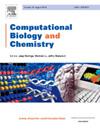im7G-DCT:一种基于改进DenseNet和变压器的m7G站点预测双支路策略模型
IF 2.6
4区 生物学
Q2 BIOLOGY
引用次数: 0
摘要
N-7甲基鸟苷(m7G)是一种重要的RNA修饰,在调节基因表达和细胞生理功能中起关键作用。医学研究表明,m7G与多种疾病的发展密切相关,包括癌症、神经退行性疾病和病毒感染。因此,准确识别mRNA中的m7G位点对临床应用和治疗策略的制定具有重要意义。随着计算方法的快速发展,深度学习预测模型在m7G站点领域得到了广泛的应用。基于改进的密集连接卷积网络和变压器,我们开发了一个名为im7G-DCT的模型,该模型采用双分支策略从原始特征代码中并行提取局部和全局特征。我们发现这种创新策略可以更深入地挖掘m7G基因座序列的潜在特征信息,增强了特征的丰富性,提高了预测的准确性。im7G-DCT模型作为一种创新的深度学习方法,在生物信息学领域显示出重要的研究价值,具有广阔的应用前景。在独立测试实验结果中,im7G-DCT模型的灵敏度、特异度、准确度和马修斯相关系数分别达到81.68 %、90.52 %、86.10 %和72.48 %。im7G-DCT模型在所有评估指标中表现良好,显著优于其他现有预测模型。本文章由计算机程序翻译,如有差异,请以英文原文为准。
im7G-DCT: A two-branch strategy model based on improved DenseNet and transformer for m7G site prediction
N-7 methylguanosine (m7G) is an important RNA modification that plays a key role in regulating gene expression and cellular physiological functions. Medical research has shown that m7G is closely associated with the development of a variety of diseases, including cancer, neurodegenerative diseases and viral infections. Therefore, accurate identification of m7G sites in mRNA is important for clinical applications and development of therapeutic strategies. With the rapid development of computational methods, deep learning prediction models are widely used in the field of m7G site. We developed a model called im7G-DCT based on the improved Densely Connected Convolutional Network and Transformer, which employs a two-branching strategy to extract local and global features from the original feature code in parallel. We found that this innovative strategy can mine the potential feature information of m7G locus sequences in a deeper way, which enhances the richness of features and improves the accuracy of prediction. As an innovative deep learning method, the im7G-DCT model shows important research value in the field of bioinformatics and has broad application prospects. In the results of independent test experiments, the im7G-DCT model achieved 81.68 %, 90.52 %, 86.10 %, and 72.48 % in sensitivity, specificity, accuracy, and Matthews' correlation coefficient, respectively. The im7G-DCT model performs well in all evaluation metrics and it significantly outperforms other existing prediction models.
求助全文
通过发布文献求助,成功后即可免费获取论文全文。
去求助
来源期刊

Computational Biology and Chemistry
生物-计算机:跨学科应用
CiteScore
6.10
自引率
3.20%
发文量
142
审稿时长
24 days
期刊介绍:
Computational Biology and Chemistry publishes original research papers and review articles in all areas of computational life sciences. High quality research contributions with a major computational component in the areas of nucleic acid and protein sequence research, molecular evolution, molecular genetics (functional genomics and proteomics), theory and practice of either biology-specific or chemical-biology-specific modeling, and structural biology of nucleic acids and proteins are particularly welcome. Exceptionally high quality research work in bioinformatics, systems biology, ecology, computational pharmacology, metabolism, biomedical engineering, epidemiology, and statistical genetics will also be considered.
Given their inherent uncertainty, protein modeling and molecular docking studies should be thoroughly validated. In the absence of experimental results for validation, the use of molecular dynamics simulations along with detailed free energy calculations, for example, should be used as complementary techniques to support the major conclusions. Submissions of premature modeling exercises without additional biological insights will not be considered.
Review articles will generally be commissioned by the editors and should not be submitted to the journal without explicit invitation. However prospective authors are welcome to send a brief (one to three pages) synopsis, which will be evaluated by the editors.
 求助内容:
求助内容: 应助结果提醒方式:
应助结果提醒方式:


